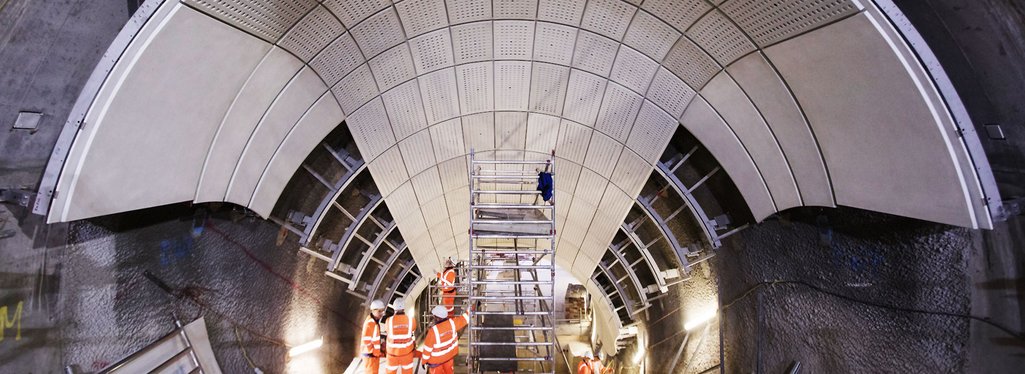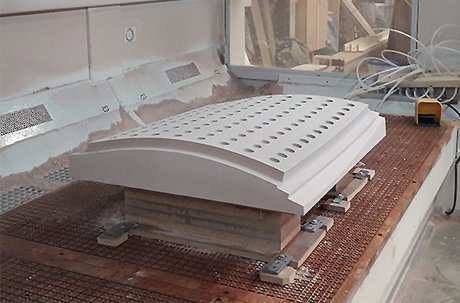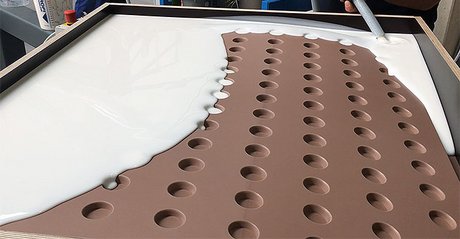
Polyurethane for Gigantic Construction Project
High-performance precision molds made of polyurethane, developed by RAMPF Polymer Solutions and WASA Compound GmbH & Co. KG, play an important role in the gigantic railway project Crossrail in London. Find out more about the project and how facade panels are produced.
It's a huge construction project: the Crossrail railway project, launched in 2009, encompasses a new 118 km long rail network to strengthen the current infrastructure of the London metropolitan region.
Crossrail includes the construction of eight new underground stations. For the current construction phase at Bond Street Station, the Lindner Group, a leading manufacturer and contractor for building envelope, interior fit-out, and insulation, is supplying the facade panels made of glass fiber concrete. Lindner Group awarded the contract to supply the precast molds for the production of the facade panels to WASA Compound, the specialist for large-format liners and molds made of high-quality polyurethane.
Strong partners: WASA Compound and RAMPF Polymer Solutions
The project-specific polyurethane solutions for the precast molds are developed by WASA Compound GmbH & Co. KG together with RAMPF Polymer Solutions. The companies have been working together in this field for a long time and distribute the products within the framework of a joint sales partnership.
RAMPF Polymer Solutions is therefore directly involved in the production of the precast molds for the Crossrail railway project, making an important contribution to the production of the facade panels for the new Bond Street railway station.
Manufacturing high-quality facade panels
The Bond Street project comprises a total of 86 basic facade types with a wide variety of geometries. The manufacture of these highly complex polyurethane casting molds for the facade elements requires an ultra-precise manufacturing process.

In the first step, a model is created on the basis of which the precast mold is produced as a negative mold. This model is visualized by virtual 3D modelling and finally produced with a CNC-controlled 5-axis portal milling machine.
A micro-fine coating is applied for a smooth and closed surface.

The polyurethane system was specially developed for large-size, self-supporting molds. Due to the low viscosity and extended pot life of 30 minutes, the thinly flowing two-component casting resin can be easily processed manually. Polyurethane precast molds in Shore A65 have proven particularly suitable for three-dimensional components.
After the precast molds have been manufactured, the facade panels are made from glass fiber concrete via pressure injection molding. The liquid concrete mixture is injected into the precast mold with a pistol. In the spraying process, small glass fibers are added to the liquid concrete. The architectural concrete must exhibit a particularly smooth surface with highest class concrete brut.
